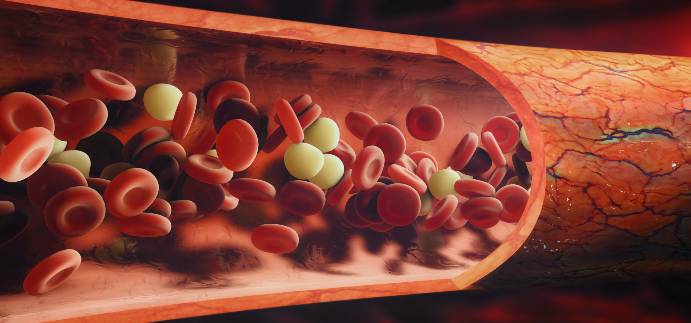Final Analysis of Phase 3 HOPE-B Trial: Durability of Etranacogene Dezaparvovec and QoL Improvements
The trial met its primary efficacy end point, and participants reported improvements in quality-of-life factors such as outlook on the future and feelings about having hemophilia.
(Adobe Stock)

Results from the phase 3 HOPE-B trial (NCT03569891) were first shared in December 2021, when it was announced that investigational adeno-associated virus 5 (AAV5) gene therapy etranacogene dezaparvovec (uniQure; CSL Behring) had met its primary end point of reduction in annualized bleeding rate (ABR) post-treatment compared with baseline Factor IX (FIX) prophylactic therapy in patients with hemophilia B (HB).1
Now, at the American Society of Gene & Cell Therapy 25th Annual Meeting (ASGCT), held in Washington, DC, and virtually May 16-19, 2022, investigators are sharing their final analysis, in which the therapy continues to produce stable hemostatic correction and improvements in hemophilia-related quality of life via a one-time dose.2
HOPE-B, an open-label, single-arm study, was designed to evaluate the safety and efficacy of etranacogene dezaparvovec. A total of 54 adult patients with HB and a baseline FIX of < 2% were treated (n = 33 with pre-existing AAV5 neutralizing antibodies (NAbs), n = 21 without pre-existing AAV5 neutralizing antibodies). All participants underwent a > 6-month lead in period of FIX prophylaxis before receipt of 2x1013 gc/kg etranacogene dezaparvovec.
Investigators assessed health-related quality of life (HRQoL) via a hemophilia-specific Hem-A-QoL instrument over the course of the lead-in period and at month 6 and month 12 after treatment and considered a one-sided P-value ≤ .025 for the post-treatment lead-in period to be statistically significant.
A total of 37 participants experienced 92 adverse events (AEs) that were considered to be related to treatment. However, more than 80% of them (74, 80.4%) were mild in nature. One patient experienced a serious AE, hepatocellular carcinoma, but it was found to be unrelated to the vector.
At the 6-month mark post-treatment, mean FIX activity was 39.0 IU/dL (standard deviation ±18.7; minimum 8.2, maximum 97.1). A year later, at the 18-month mark, it was 36.9 IU/dL (±21.4; 4.5, 122.9). Among participants who received a full dose of etranacogene dezaparvovec, FIX prophylaxis was discontinued by all whose AAV5 NAbs were undetected or who had pre-dosing NAbs up to a titer of 678. This constituted an overall 97% reduction in mean unadjusted annualized FIX consumption.
The 52-week adjusted ABR for all bleeds was reduced 64% (P = .0002), from 4.19 during the ≥ 6-month lead-in period to 1.51 during months 7-18. This was enough to establish statistical superiority over FIX prophylaxis and achieve the study’s primary end point.
“Following a single dose of etranacogene dezaparvovec, participants experienced a stable and durable increase in mean FIX activity into the near-normal range at 18 months and hemostatic protection, achieving the HOPE-B primary efficacy end point,” investigators concluded.
Participants reported significant improvements across a host of HRQoL domains, resulting in an increased total score overall (LS means -5.50; P < .0001; percentage improvement 21.5%). Notably, trial participants reported percentage improvements of 45.7% and 59.0% in Feelings (current emotions associated with having hemophilia) and Treatment (burden of hemophilia treatments), respectively, between the lead-in period and the post-gene therapy treatment period.
Etranacogene dezaparvovec was previously granted breakthrough therapy designation by the US Food and Drug Administration and access to Priority Medicine (PRIME) regulatory initiative by the European Medicines Agency (EMA). uniQure developed the gene therapy before entering into a Commercialization and License Agreement with CSL Behring in June 2020 for exclusive global rights to the therapy. It was announced in March that the EMA had begun reviewing a Marketing Authorization Application submitted by CSL Behring for etranacogene dezaparvovec in hemophilia.3
“As the first gene therapy candidate for hemophilia B, this pivotal regulatory milestone brings CSL Behring one step closer to delivering on the promise of gene therapy for the bleeding disorders community,” Emmanuelle Lecomte Brisset, head of Global Regulatory Affairs at CSL Behring, said in a statement. “We look forward to working with regulatory authorities to bring the transformative potential of gene therapy to people living with this debilitating, life-long condition.”
References:
Johnson, V. Hemophilia B gene therapy meets primary end points in HOPE-B trial. CGTL website. Published December 9, 2021. Accessed May 12, 2022. https://www.cgtlive.com/view/hemophilia-b-gene-therapy-meets-primary-end-points-hope-b-trial
Pipe S, Leebeek F, Recht M, et al. Stable hemostatic correction and improved hemophilia-related quality of life: final analysis from the pivotal phase 3 hope-b trial of etranacogene dezaparvovec. Presented at: American Society of Gene & Cell Therapy 25th Annual Meeting; May 16-19, 2022; Washington, DC. Accessed May 12, 2022. https://annualmeeting.asgct.org/abstracts/abstract-details?abstractId=3785
European Medicines Agency commences review of novel gene therapy candidate etranacogene dezaparvovec for people with Hemophilia B. News release. CSL Behring. March 28, 2022. https://www.cslbehring.com/newsroom/2022/ema-commences-review-of-novel-gene-therapy-candidate-etranadez-for-people-with-hemophilia-b
News and Expert Insights in Hemophilia Gene Therapy for Bleeding Disorders Awareness Month 2025
March 9th 2025In observance of Bleeding Disorders Awareness Month, held annually in March, catch up on some of the latest news and expert insights in gene therapy for hemophilia, which is among the most common of these disorders.